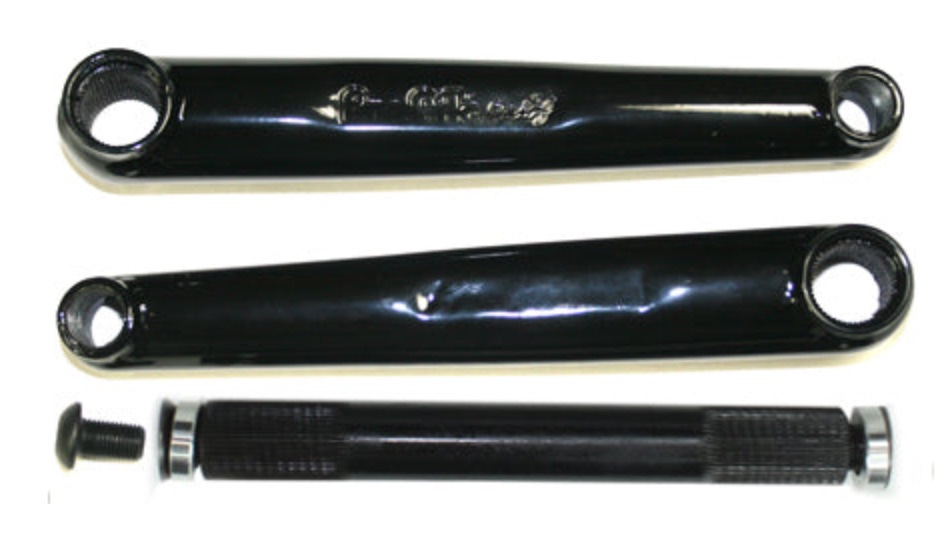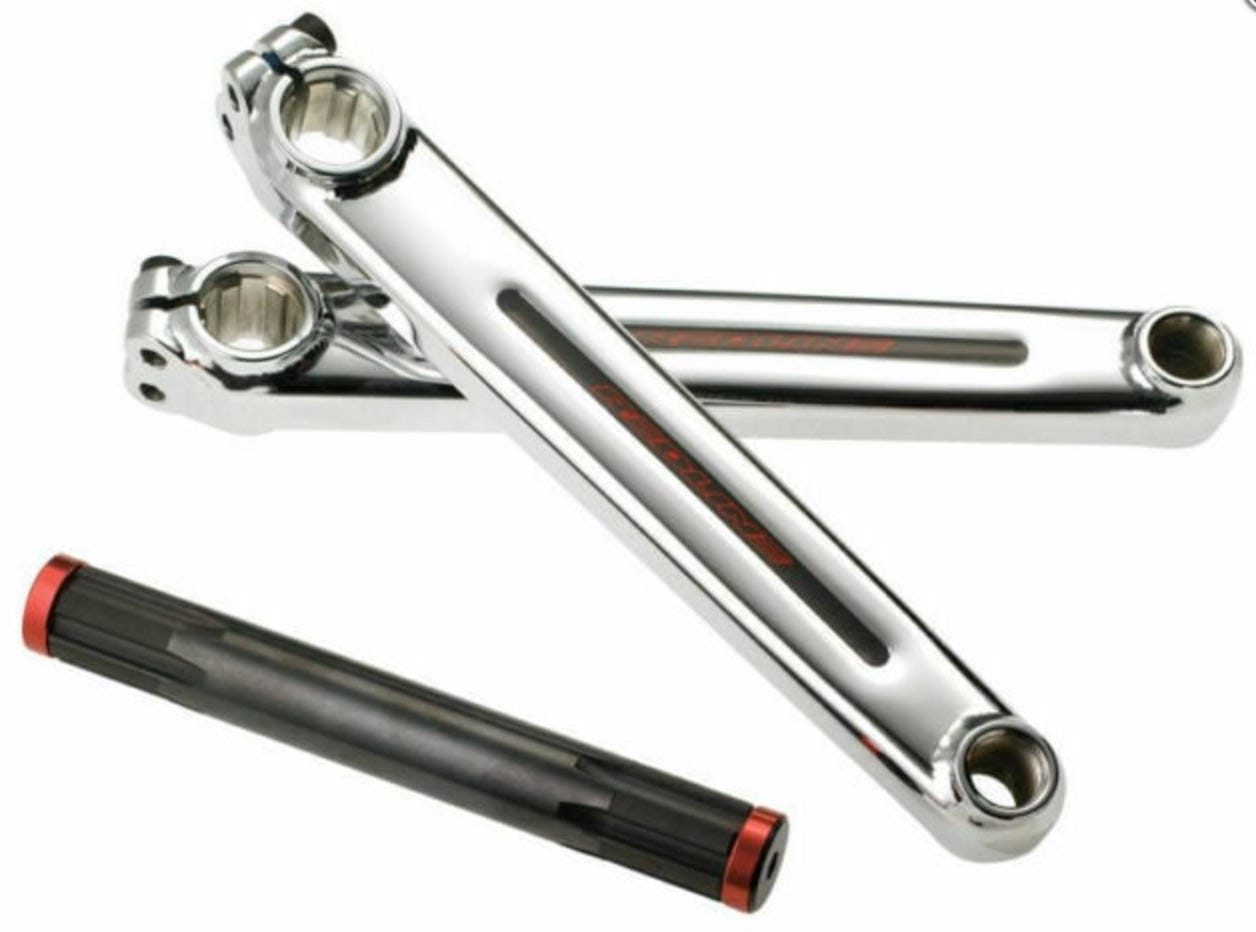Dear Lennard,
I have been reading a ton of articles online about crank length and have a question that hopefully you can answer. Most articles I find are for road bike or MTB, but I am trying to find the ideal crank length for BMX racing. Have you done any studies that would help? I am 54 years old, 5'4" with a 28.5" inseam. I currently ride a 175mm crank that many tell me is too long. I have been doing some max cadence testing and can spin them to 170rpm max. Thoughts?
Dave
Dear Dave,
While I do have some ideas about crank length in BMX and have done a lot of crank length testing on myself, with other riders for VeloNews articles over the decades, and with customers buying Zinn, Clydesdale, Tui, and KHS bikes I’ve designed and cranks in lengths I’ve chosen to go with them, my tests are anecdotal. Crank testing can’t be done in a traditional double-blind test (a classic example is one group receiving a placebo and another receiving the drug being tested), because there is no way to conceal from the rider that he or she is on different crank lengths from test run to test run. However, Jim Martin, a professor of Nutrition and Integrative Physiology and directs the Neuromuscular Function Lab at the University of Utah, has published seven peer-reviewed studies of crank length in physiology journals despite this fundamental issue. Since small differences in crank length are completely lost in the statistical noise, his tests, like the ones I have done, cover a wide range, from 220mm to 120mm.
While I can theorize about cranks for it, I have never ridden BMX. Martin’s tests also involve no BMX simulations, but he answers many questions about crank length in this podcast and talks specifically about BMX in it; I recommend you listen to it. You will get ideas from him and from me, but it will require experimentation on your part. Since no two people are the same, it will depend on you as much as on the discipline you’re engaged in. The fact that you can turn a 175mm crank at 170RPM, presumably while out of the saddle, I see no reason on the face of it why you should change crank length.
First, we must understand some physics to be able to understand crank length. Power is energy per unit time, and all you can expect to generate for an extended period is a few 100W lightbulbs worth, so let’s make it count. When doing rotational mechanical work, power is equal to torque multiplied by rotational frequency. Torque is the rotational form of force; it is equal to the applied force multiplied by the radius of the circle. The radius of the cycling crank circle is the length of the crank. And in cycling, rotational frequency is called cadence, measured in rotations per minute (RPM).
Thus, cycling power is torque multiplied by cadence, and torque is the force applied to the pedal multiplied by the crank length. Since it is a linear relationship, if the crank length is reduced (thus reducing torque) while the cadence increases by the same percentage, the rider’s power output for the same force input will be unchanged. Similarly, increasing crank length while proportionally decreasing cadence and maintaining constant pedaling force results in no change in power output. Those changes in either direction do have obvious gearing consequences, though.
A rider will not spin a longer crank at the same RPM as he/she will spin a shorter crank. Consider it at the limits if it’s not obvious; imagine trying to turn a 500mm-long crank at 90RPM. Now think of how ridiculous it would feel to only turn a 50mm-long crank at 90RPM! So, the extra leverage of a longer crank is offset by the lower cadence the rider will naturally select when using it. And the reduced leverage of a shorter crank is offset by the higher cadence the rider will naturally select when pedaling it.
BMX is an event that lends itself to longer cranks more than do most cycling disciplines. It is a full-out sprint over 40 seconds that is won in the first two seconds and can be lost at any time. The 180mm-190mm crank lengths that top BMX riders often ride are long relative to what road and MTB riders use, and they are really long compared to those used by track (velodrome) sprinters, even though the heavily-muscled bodies of top track sprinters resemble those of top BMX riders.
A critical difference from BMX is that velodrome sprinters race seated; they might start the sprint with a few standing pedal strokes, but once they get up to speed, they stay seated the entire time. BMX riders, by contrast, are out of the saddle the whole race. Passing and drafting are more effective on a velodrome, since riders can tuck in tightly to each other while their tires stay on terra firma; the rider in back has the advantage of being able to slingshot out of the other rider’s draft and shoot past the in the final stretch. It’s the opposite in BMX due to its numerous jumps; the rider in front has the advantage, since riding close enough to slingshot out of the draft would guarantee massive crashes. BMX riders are not only airborne much of the time, but slight differences in their launch angles and their arms, handlebars, and bikes flailing back and forth mandate that they maintain distance from each other.
In a seated velodrome sprint, the knees bend less sharply than with a shorter crank. The rider can gain an aerodynamic drag reduction by lowering their chest; with a shorter crank in the same low upper body position, their hip angle at the top of the stroke is more open, their low back and hamstring muscles are less tight, and their knees and thighs don’t come up as high to their chest and lunch muscle.
Keep reading with a 7-day free trial
Subscribe to Technical Q&A with Lennard Zinn to keep reading this post and get 7 days of free access to the full post archives.






